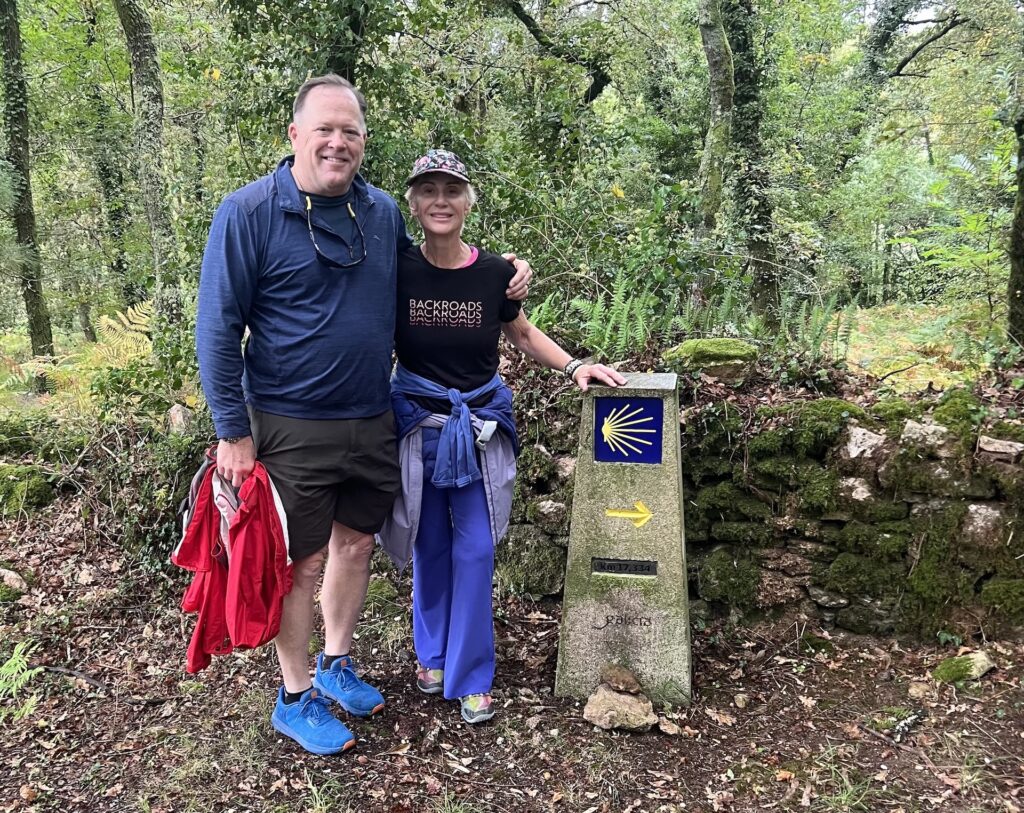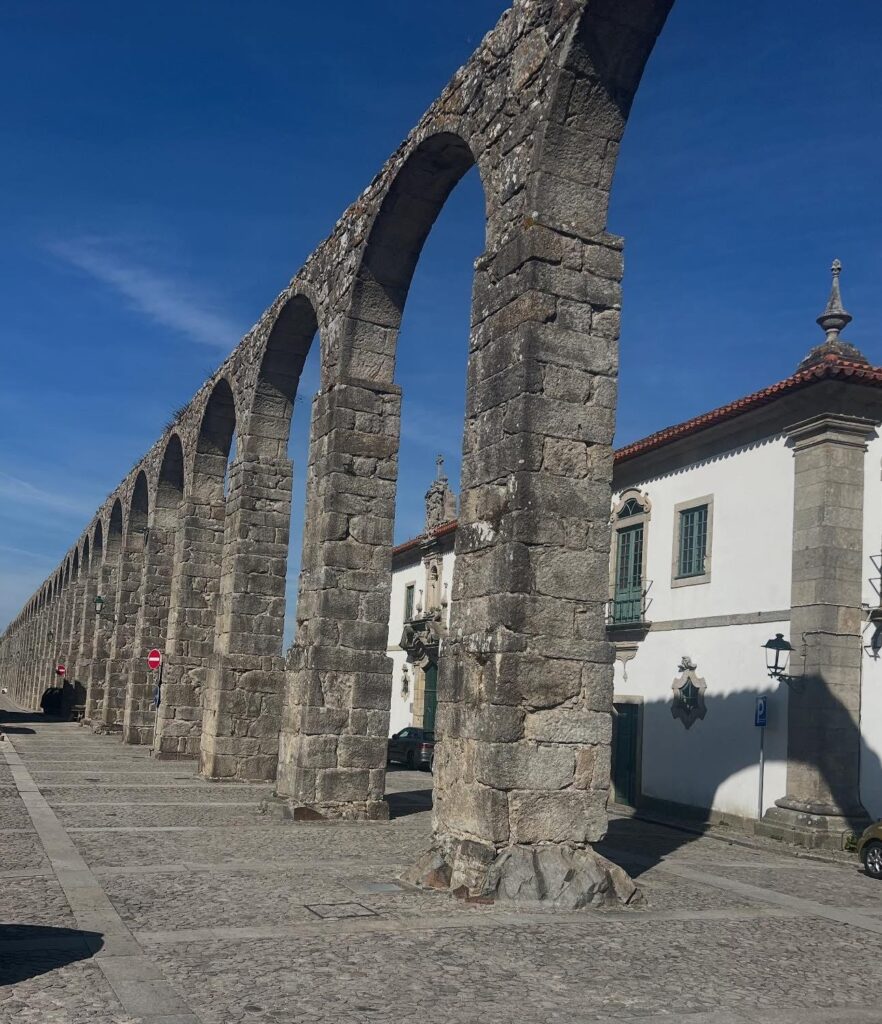Buen Camino:
Measure Twice, Lead Once

Earlier this month, my wife and I had the privilege of walking a portion of the Buen Camino through Portugal and northern Spain, following a pilgrimage path that people of faith have walked for more than 1,000 years.
If you joined us as we walked into Vila do Conde in northern Portugal, you couldn’t miss it: a line of stone arches stretching across the landscape, silent and graceful, carrying the story of both failure and foresight.
They’re part of the Aqueduct of Santa Clara, built hundreds of years ago to bring water up the hill to a convent. It’s an amazing sight. But what really stuck with me wasn’t the beauty—it was the lesson behind it.
Back in 1626, a group of engineers and builders set out to create this aqueduct. The idea was bold: bring fresh water from the countryside up to the convent. But they made one huge mistake.
They miscalculated the slope. The gradient wasn’t steep enough for water to actually flow. So when they finished, it looked impressive.
But the math was wrong.
All that stone. All that time. And no water.
The project was abandoned, and for the next 75 years, those unfinished arches stood there—a silent reminder of what happens when leaders don’t “measure twice, cut once.” It wasn’t until a new team took over in 1705 that the job was done right. Finally, in 1714, the convent had water.
Nearly a century of waiting—because no one checked the math.
Fellow leader – That story has been echoing in my mind ever since. It’s easy as leaders to get swept up in action. We want momentum. We want progress. We want to show that something’s happening.
But if we rush through the measuring—if we skip the hard questions, the careful planning, the quiet thinking—we risk building something that looks solid but doesn’t actually flow.
Those first builders didn’t fail because they lacked effort. They failed because they lacked precision.
And that’s a leadership principle worth remembering: speed without accuracy isn’t progress—it’s waste.
Those first arches above Vila do Conde were beautifully crafted. But they didn’t deliver water. And if our leadership doesn’t deliver results, no amount of craftsmanship or charisma will make up for it.
Conviction Needs Competence
I often teach that leadership requires Conviction, Competence, Character, and Covenant. The first builders had conviction: they believed in their mission. But they lacked competence in one critical area: engineering precision.
As leaders, conviction inspires our teams: but competence ensures the mission succeeds. To be honest, this is a fear I carry regularly – I’m a bit of a dreamer and get excited about “the next thing” but have failed at times on the follow through. These failures has cost time, money, and maybe most importantly, the trust of my team members. It’s not enough to be passionate about where we’re going; we have to know how to get there.
Before launching the next big initiative, ask:
- Have we measured the gradient?
- Do we have the right expertise?
- Have we validated the assumptions we’re building on?
Conviction without competence creates monuments to failure. Together, they create flow.

The Invisible Work Matters
The second builders, the ones who finished the job, didn’t just start stacking stone. They studied. They recalculated. They slowed down.
In leadership, the invisible work, the planning, the conversations, the measuring, is what determines whether the visible work succeeds.
It’s not glamorous. It doesn’t look productive. But it’s the difference between water that flows and water that doesn’t.
When I looked at those arches, I was reminded to pause before making big decisions. Check the gradient. Ask the questions that take time but prevent years of regret.
The best leaders “measure twice” by taking time for reflection, conversation, and feedback before they cut once on a big decision.
Failure Isn’t Final
Here’s the redeeming part of the story: when the project resumed in 1705, the new team didn’t start from scratch. They started from learning.
The story didn’t end with failure.
They studied what had gone wrong. They measured again: this time with better tools, better insight, and, I assume, with better humility. And because of that, what had stood as a monument to failure became a triumph of endurance; when completed, there were 999 arches that carried the aqueduct more than two miles from a spring of fresh water into the convent.
That’s good news for us as leaders. Our past miscalculations don’t have to define us: they can refine us.
Every misstep, every project that “didn’t flow,” every team we led before we knew better: those aren’t wasted years. They’re the raw material for wisdom.
Leading for Flow not for Show
The builders who finally completed the aqueduct didn’t live to see its 21st-century beauty that Lynn and I got to see on our walk along the Buen Camino. These leaders built something to serve others for generations upon generations.
That’s leadership stewardship: doing the careful, patient work that will bless people you’ll never meet.
Whether you’re leading a team, a company, or a community, the question is: Am I building for flow, or for show?
Flow leadership ensures the system works, the people grow, and the mission continues long after we’re gone. Show leadership builds arches that photograph well: but never deliver water.
Measure Twice. Lead Once.
Leadership, like engineering, is both art and precision.
Before we build, we must measure: our motives, our methods, our direction. Before we act, we must think. And before we speak, we must listen.
When we do, the “water” of our leadership: trust, influence, and impact: will flow where it’s needed most.
Fellow leader: the next time you’re tempted to rush your leadership decisions, think of those Portuguese masons and their silent arches. They remind us that “measure twice, lead once” is more than a construction principle: it’s a leadership necessity.
Buen Camino.
Sometimes the oldest stones have the newest lessons.
